morioc
AH fanatic
Hunting Roan Antelope
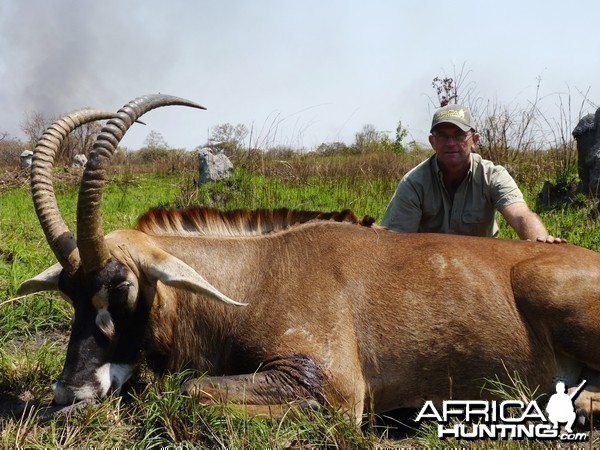
Big 32 inch Roan bull hunted in Central African Republic.
In English Roan Antelope (Hippotragus equinus) and in French known as Antilope Chevaline, Antilope Rouane and Hippotrague, Roan Antelope is a large, prestigious and sought after antelope by hunters sportsmen.
Six subspecies have been described, but the validity of most of these is still in doubt, and recent genetic studies have shown that only the western African subspecies (koba) constitutes a genetically separate group from those in the rest of Africa. The Roan Antelope formerly occurred very widely in the savanna woodlands and grasslands of sub-Saharan Africa, but has been eliminated from large parts of its former range. Remarkably, the species remains locally common in West and Central Africa, while in East and southern Africa, the traditional antelope strongholds, the species is now very rare. The species is now locally extinct in Burundi, Eritrea and possibly Gambia. It was also eliminated from Swaziland and later reintroduced to the privately owned Mkhaya Nature Reserve.
Roan Antelope stand about a metre and half at the shoulder (average shoulder height: 143 cm (56 inches)) and a large male weighs between 260 kg (570 lb) and 320 kg (700 lb) while the average weight of the Roan is about 250 kg (550 lb). It has a tawny coat with a black and white mask (lighter in females) which gives it a special character. Named for the "roan" color (a reddish brown), they have a lighter underbelly.
Their habitat consists of savannah woodlands and grasslands, and the bushveld and lowveld of southern Africa, with the cover of high grasses and woody plants playing an important role for both grazing and calving. A water-dependent grazer/browser.
They live in herds of up to 45 individuals with one or two large males but it is more common to see dozens of animals together forming harem groups with a single dominant male. Roan Antelope commonly fight among themselves for dominance of their herd, brandishing their horns while both animals are on their knees.
Groups of males are very rare however the male loners, young and old are fairly common. It is better to hunt the loners as it is disturbing to shoot the dominant male in a herd since it can take up to a year before another male is accepted within the harem.
The hunt takes place either by encounter in the great grasslands plains in the middle of the day or by tracking which is very delicate and hard. A fairly powerful class of rifle must be used such as a 300 or 375HH. An average trophy measures 65 cm (25.6 inches), and 70 cm (27.6 inches) for a good trophy, anything above 70 cm (27.6 inches) makes for a great trophy. In 8 years of hunting in Benin where the density of Roan is very high, average horn length was 64 cm (25.2 inches) and 68 cm (26.8 inches) in CAR.
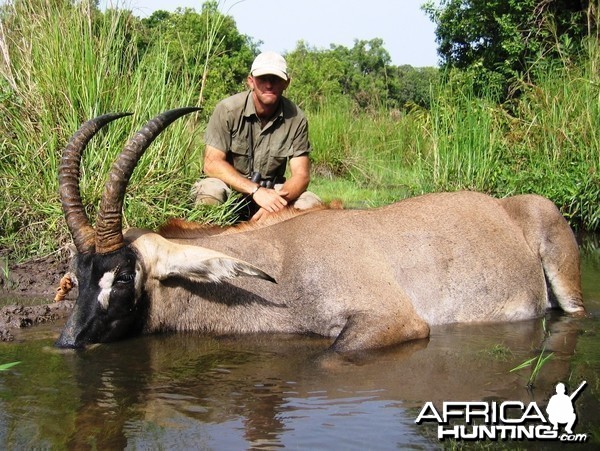
27 inch Roan bull hunted while feeding algae in the river!!

Two 27.5 inch Roan bulls.

Two 27 inch Roan bulls.
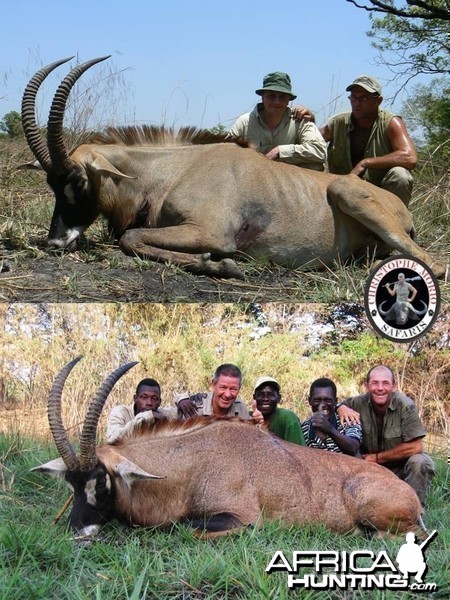
30 and 29 inch Roan bulls.
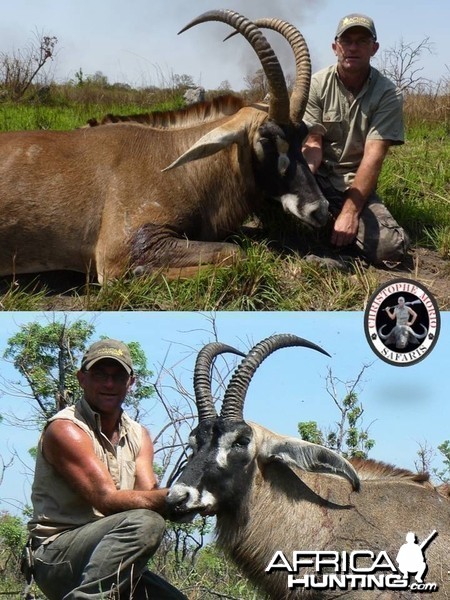
32 and 29 inch Roan bulls.
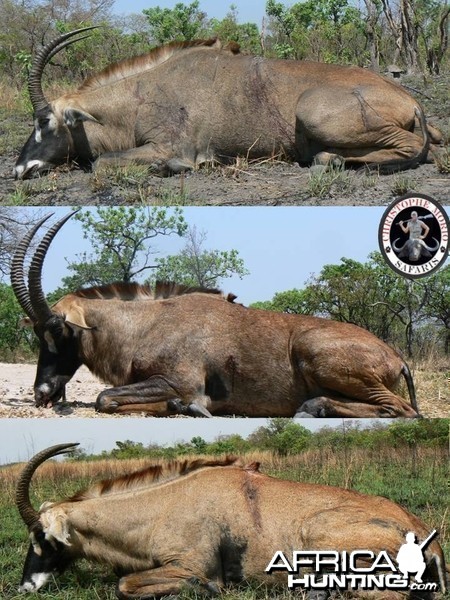
Roan Antelope.
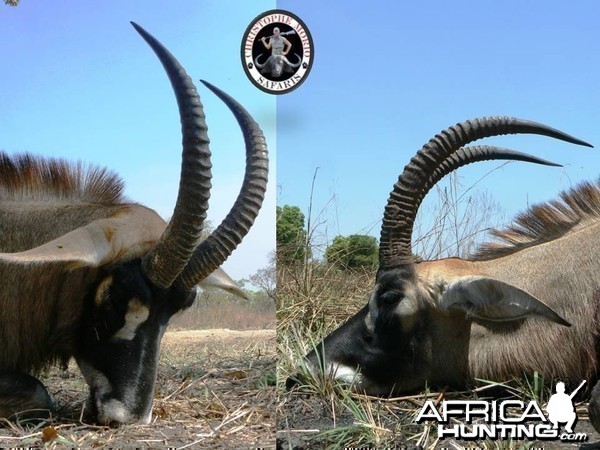
29 and 30.5 inch Roan bulls.
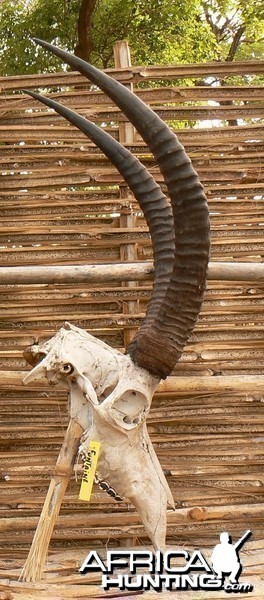
30 inch Roan.
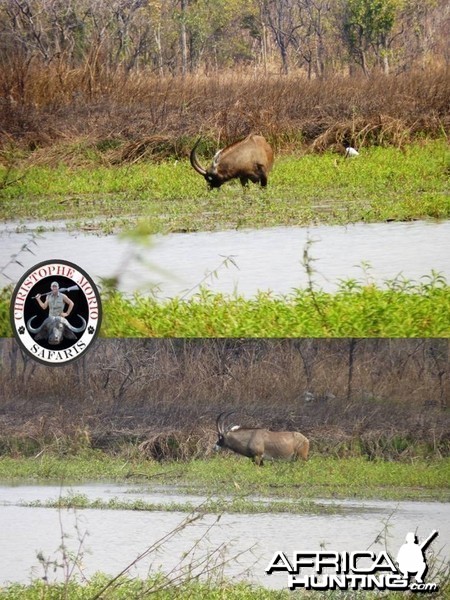
28.5 inch Roan bull.
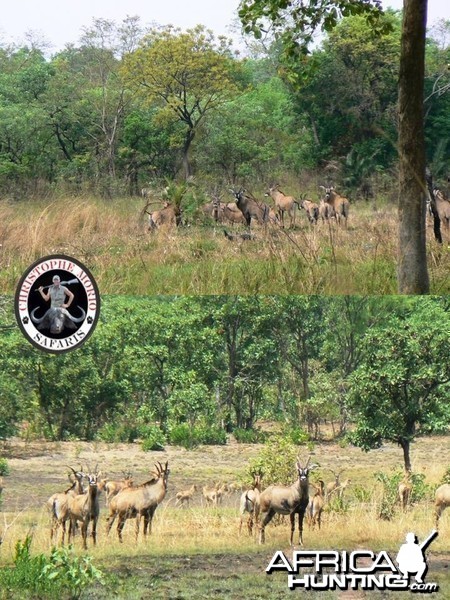
Herd of Roan Antelope, check out the bull...
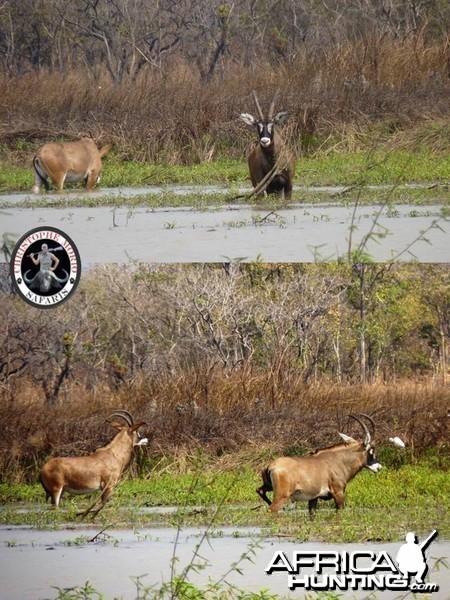
Roan bull and cow.
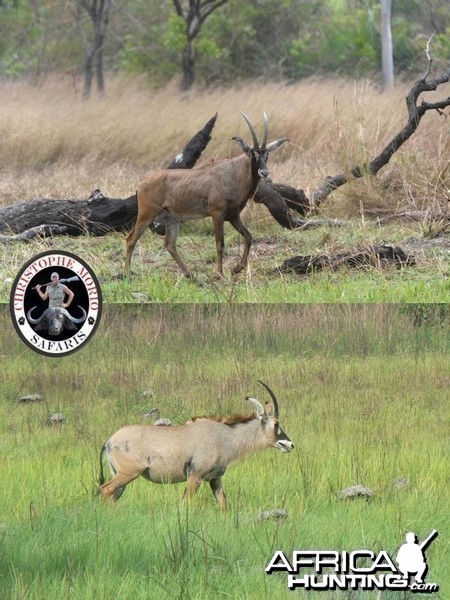
Roan bull and cow.

Roan bull.
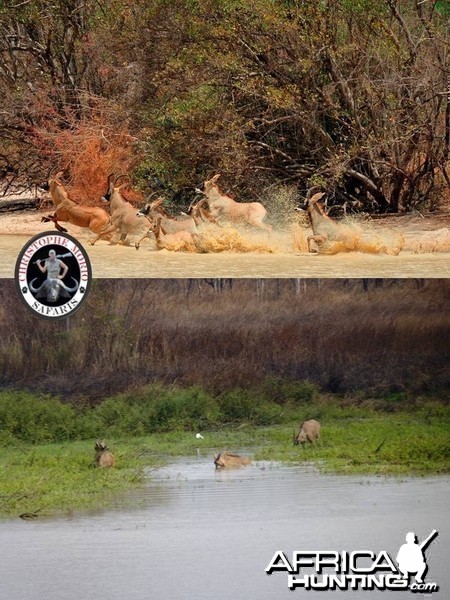
Roan in water!!
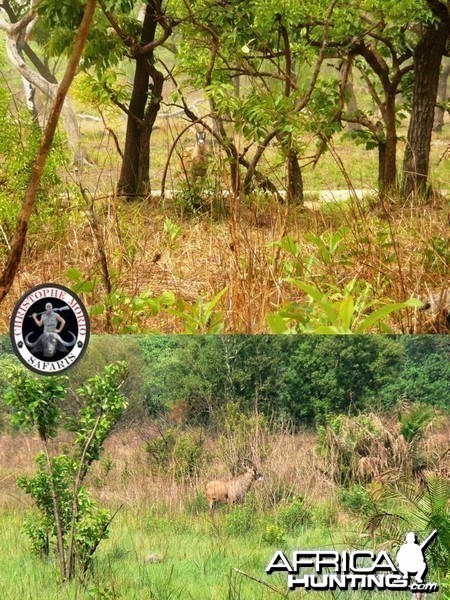
Roan Antelope
(click on thumbnail to view videos of Roan)


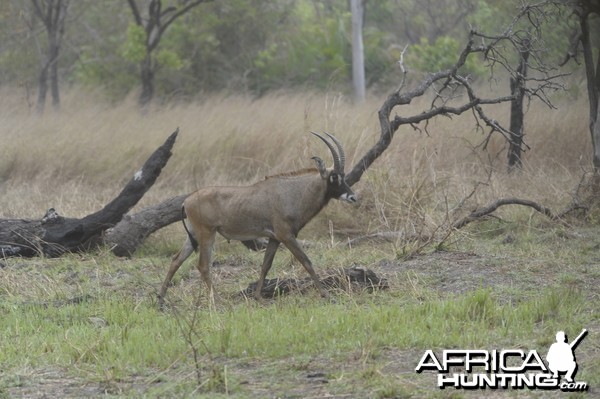
Roan bull.

Herd of Roan Antelope.
Big 32 inch Roan bull hunted in Central African Republic.
In English Roan Antelope (Hippotragus equinus) and in French known as Antilope Chevaline, Antilope Rouane and Hippotrague, Roan Antelope is a large, prestigious and sought after antelope by hunters sportsmen.
Six subspecies have been described, but the validity of most of these is still in doubt, and recent genetic studies have shown that only the western African subspecies (koba) constitutes a genetically separate group from those in the rest of Africa. The Roan Antelope formerly occurred very widely in the savanna woodlands and grasslands of sub-Saharan Africa, but has been eliminated from large parts of its former range. Remarkably, the species remains locally common in West and Central Africa, while in East and southern Africa, the traditional antelope strongholds, the species is now very rare. The species is now locally extinct in Burundi, Eritrea and possibly Gambia. It was also eliminated from Swaziland and later reintroduced to the privately owned Mkhaya Nature Reserve.
Roan Antelope stand about a metre and half at the shoulder (average shoulder height: 143 cm (56 inches)) and a large male weighs between 260 kg (570 lb) and 320 kg (700 lb) while the average weight of the Roan is about 250 kg (550 lb). It has a tawny coat with a black and white mask (lighter in females) which gives it a special character. Named for the "roan" color (a reddish brown), they have a lighter underbelly.
Their habitat consists of savannah woodlands and grasslands, and the bushveld and lowveld of southern Africa, with the cover of high grasses and woody plants playing an important role for both grazing and calving. A water-dependent grazer/browser.
They live in herds of up to 45 individuals with one or two large males but it is more common to see dozens of animals together forming harem groups with a single dominant male. Roan Antelope commonly fight among themselves for dominance of their herd, brandishing their horns while both animals are on their knees.
Groups of males are very rare however the male loners, young and old are fairly common. It is better to hunt the loners as it is disturbing to shoot the dominant male in a herd since it can take up to a year before another male is accepted within the harem.
The hunt takes place either by encounter in the great grasslands plains in the middle of the day or by tracking which is very delicate and hard. A fairly powerful class of rifle must be used such as a 300 or 375HH. An average trophy measures 65 cm (25.6 inches), and 70 cm (27.6 inches) for a good trophy, anything above 70 cm (27.6 inches) makes for a great trophy. In 8 years of hunting in Benin where the density of Roan is very high, average horn length was 64 cm (25.2 inches) and 68 cm (26.8 inches) in CAR.
27 inch Roan bull hunted while feeding algae in the river!!
Two 27.5 inch Roan bulls.
Two 27 inch Roan bulls.
30 and 29 inch Roan bulls.
32 and 29 inch Roan bulls.
Roan Antelope.
29 and 30.5 inch Roan bulls.
30 inch Roan.
28.5 inch Roan bull.
Herd of Roan Antelope, check out the bull...
Roan bull and cow.
Roan bull and cow.
Roan bull.
Roan in water!!
Roan Antelope
(click on thumbnail to view videos of Roan)


Roan bull.
Herd of Roan Antelope.
Last edited by a moderator: